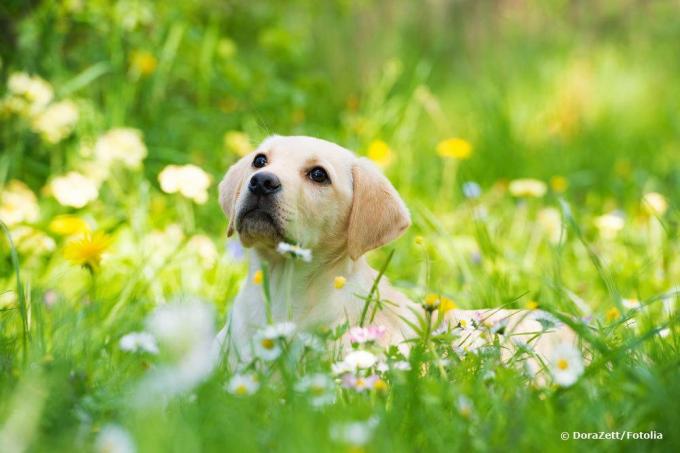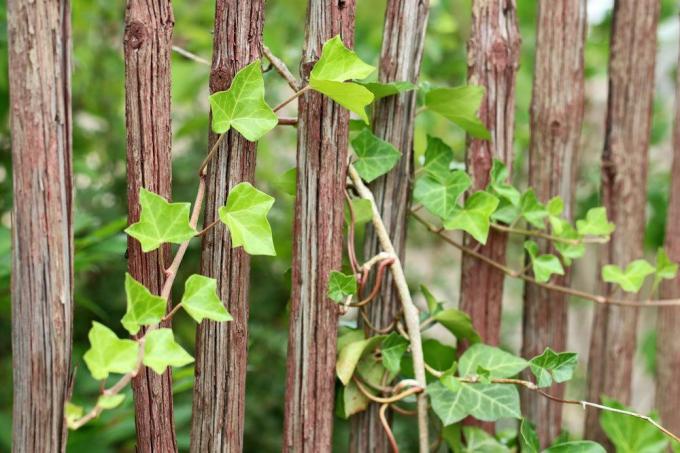
table of contents
- Damage image
- Salvation for the green space
- Remove yellow spots in green areas
- prevention
- Enclosures
- Dog restraint
- Stones in the water bowl
Dog urine can quickly become unsightly if it is constantly exposed to the same lawn areas stains cause. This is particularly quick in open front gardens, to which many dogs have access.
Damage image
Basically, urine, like feces, is to be regarded as fertilizer. However, with direct influence, the nutrients are applied far too concentrated in one place and burn the lawn. It is even more problematic when the dogs always use the same place to relieve themselves. After the grass initially grows stronger and faster at this point, it quickly turns yellow. The stalks look dry and the roots die off.

Salvation for the green space
As long as areas frequently frequented by dogs stand out with their strong green, longer stalks and rapid growth, countermeasures can still be taken. Water the area thoroughly and thoroughly. If you know roughly when the dogs in question will be passing your property, you will be able to water the lawn at exactly that point. With a little luck, the dog will fail to distribute its urine again if its paws are wet. The water dilutes the dog's urine, making it less aggressive. Nutrients are distributed and washed into deeper layers of the earth.
Note: If your lawn is frequented by dogs, avoid adding additional fertilizer.
Remove yellow spots in green areas
As soon as the spots in the lawn turn yellow, it is too late to save the grass at this point. The roots and with them the stalks die off. Now the only thing left to do is to prepare and re-seed the affected areas.
Instructions:

- Remove all yellow, brown and dried up plants.
- Remove the top layer of soil and dispose of it in the household rubbish or on the compost in the garden.
- Water the area thoroughly and generously.
- After the areas have dried a little, loosen the soil a little with a rake. Put new, nutrient-poor soil on the stain and mix it with the previous soil.
- Level the soil and distribute new lawn seeds evenly. Press it down well and water the area.
- Keep your lawn evenly moist for at least 4 weeks so as not to endanger the germination of the seeds.
- Take appropriate measures to prevent new stains.
prevention
Dog urine is not only annoying in lawns, it can also affect other plants in the garden. For example, hedge plants or perennials. The easiest way to prevent this is with your own dog. He can learn where he can relieve himself and what not. However, educational measures require a lot of patience and perseverance. After that, however, you can be relatively sure that your dog's urine is not responsible for stains in the green space.
Enclosures
If it is a garden that has been heavily used by strange dogs, fencing is the best solution. Although hedges look nicer than fences, they can also be affected by urine, especially for young plants. A solid fence is then more suitable. If the fencing is temporary, you can try an electric fence. Don't forget to mark it accordingly so that dog owners can protect their dog.

Dog restraint
There are several methods of keeping dogs off the property, including supplies from specialist retailers that are diluted with water The affected areas are watered or sprayed, even different plants will have a deterrent effect on dogs said. Most of the time, all measures are aimed at the dog's sense of smell. You can only try out whether they really help. It can work for some dogs, others don't care.
Note: Diluting dog urine with water, i.e. watering the garden, works best. This is another reason why dogs smell worse than their predecessors and do not all use the same place.
Stones in the water bowl
If your own dog is the culprit and education doesn't help, you can give dog rocks a try. These are stones that you put in your dog's water bowl and that help neutralize the dog's urine. Nitrates in particular are broken down as a result. The stones are completely harmless to your dog. An adapted diet can also be helpful; avoid feeding your dog too much protein. A lot of nitrate is produced when it is broken down in the digestive tract. If necessary, seek advice from your veterinarian.



